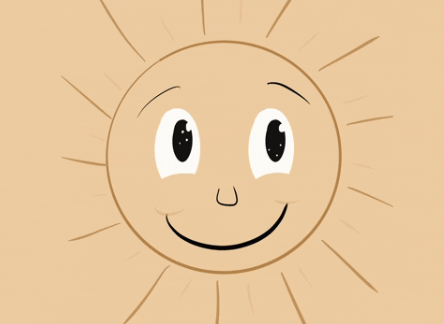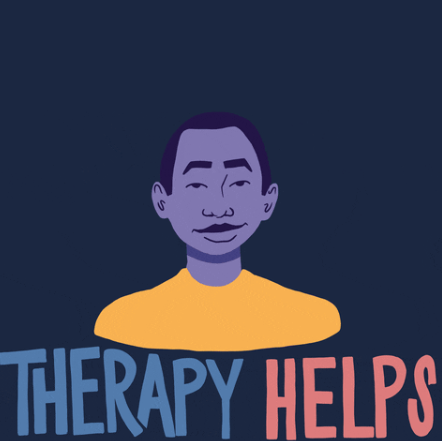We’re quickly approaching the time of the year where the days get shorter and the weather gets colder. Many of us find ourselves excited for this seasonal change. After a hot and sweaty summer, colder months can sometimes be appreciated. Personally, I look forward to seeing my family during the holidays and snowy activities. However, many of us, including your students, also experience a darker and gloomier effect during this shift, the winter blues.

So what exactly are the winter blues, are they real?
The winter blues is a term used to describe the mental shift some people experience during the winter. It can also be used as a term to describe Seasonal Affective Disorder (SAD), a form of depression associated with the change in seasons (often beginning in the fall and remaining throughout the winter months).
Those with SAD experience a variety of symptoms that can often be debilitating. These symptoms can take a serious toll on students’ mental health and academic success. They can stem from the shorter days and a lack of sunlight but often vary in intensity. While reading this list, you may notice you have felt some of these symptoms during the winter yourself. Common symptoms include:
- Feeling a sad or depressive mood
- Loss of interest in activities
- Change in appetite (usually over-eating)
- Sleeping more
- Low Energy
- Difficulty concentrating
- Social withdrawal
- Suicidal thoughts
How we can help students combat SAD!
Those of you who are professionals and working with students may be wondering how this time of the year may impact your students’ progress and success. You would be contemplating an important thought… Seasonal Affective Disorder can be especially troublesome for college students because of their common late-night routines. Staying up late at night to study for classes and sleeping in are frequent behaviors displayed by college students that prevent them from getting enough Vitamin D. Not getting enough Vitamin D puts students at risk of worsening SAD symptoms. SAD also tends to affect younger individuals the most and slowly decreases with age, putting college students at greater risk again.

Students attending college in the Northeast and Midwest tend to be at the most risk when compared to other areas but students all over the country can experience SAD. For example schools with intense winters such as the University of Michigan may have increased levels of students experiencing symptoms. According to director Paul Desan at the Yale School of Medicine, surveys show about 5% of people at mid-Atlantic latitudes struggle with seasonal affective disorder and it affects up to 11 million Americans each year. This is a substantial number considering the intense struggles people with this disorder can face when it comes to work, school, and their daily lives. Some schools in these higher-risk areas such as Yale have begun to implement resources and awareness for their students facing these struggles.
Another concern for this year is how the pandemic will affect those with SAD. The COVID-19 pandemic has limited many of our social interactions, encouraging us to stay indoors while also increasing stress levels for many families and students. Fewer social interactions, less outdoor and direct sunlight time, and higher stress levels can exacerbate the negative effects of SAD. Students who are now taking online classes instead of in-person classes also experience these limitations. These are all important factors we should think about when preparing for the upcoming months and what help students may need this year.
One study that caught my attention was done by Dr. Norman Rosenthal. The study was done with high school students in Maryland. His findings were that by their senior year “1 in 20 had full-fledged SAD and 2-3x that number had the Winter Blues.” He made it a point to state that he estimated college students would suffer in higher numbers than these high school students. I believe that institutions and professors would be able to make a positive impact by spreading awareness about SAD to their students and providing assistance. My own experiences and those shown in the Yale study have concluded that there is a general unawareness when it comes to SAD. Many students may think their depressive symptoms are stemming from midterms or outside factors when the change in season could very-well be the cause. This realization alone can provide relief for students.
The following is a list of ways to combat Seasonal Affective Disorder that professors should consider raising awareness about, as well as some actions they can take to help their students during these cold months:
1. Vitamin D!
Vitamin D is an essential vitamin we usually get from direct sunlight. During these darker months we usually spend less time outside or in the sun and may experience Vitamin D deficiency. Taking vitamin D supplements, eating foods packed with Vitamin D, and even sitting by a window inside can help increase levels of Vitamin D in our body and in-exchange reduce symptoms of SAD.

Consider bringing some Vitamin D packed foods to your classroom, holding some classes outside, or making sure the windows in your classroom are always uncovered. Encourage students to take walks or continue outdoor activities even in the cold weather and inform them on the positive impacts!
2. Light Therapy!
Light therapy is a form of therapy that uses artificial light to reduce the symptoms of SAD. You can purchase these lights yourself in many stores and also on amazon! Using light therapy may help students sleep better and improve their mood.
Institutions should consider having a light therapy room available for students to use.
Share the benefits light therapy can have for those experiencing symptoms who do not have the time to be outside (or those who dislike the cold – really, it’s understandable.)
According to Desan “80 percent of people will see benefits from doing daily bright light therapy for about half an hour before 8 a.m.”
3. Psychotherapy!
Psychotherapy can be an intimidating step to take for many individuals but it is one that can help immensely. Counselors can help students manage their depression symptoms and help them learn how to cope with any stress or negative thoughts they may be experiencing.

Encourage your students to visit the school’s counseling centers and stress the importance of seeking help.
Be understanding towards those struggling with SAD who may have difficulty with focusing on their work. Allow your classroom to be a judgement-free and open space where students feel free to share their experiences.
4. Prioritize Mental and Physical Health!
Prioritizing mental and physical health is a great step for reducing the winter blues. Going outdoors and exercising are both effective ways to reduce stress and anxiety, which will likely decrease SAD symptoms. Reducing stress and anxiety will also allow students to feel better and re-engage in their social life if they have been withdrawn. This will help classroom participation and overall success.
Talk about mental and physical health in class. It doesn’t need to take up a large amount of time but let your students know you are aware of the stressors they may be facing during this time of the year and that you understand prioritizing their health is important. You can include some small activities or incorporate mental health into a lesson. Even just introducing it at the beginning of the semester can be extremely helpful!
I first grasped how difficult SAD can be when one of my close friends shared the struggles she experienced every winter. The biggest sign was how withdrawn she became from our friend group during those cold months but it also impacted her academic work and feelings of self-worth. She used light therapy this past winter and it helped her immensely! She was able to help herself through her awareness of what was causing her symptoms. She openly expressed how she wished her University had taken more steps to provide her with knowledge and assistance she needed all those years.
To those of you who are reading this and are worried about the effects this winter will have on your students or maybe even your own mental health, know you are not alone. It may be a difficult journey but there are so many ways to improve the exhausting symptoms of Seasonal Affective Disorder. I hope this post will help inspire you to think of ways to take those steps, for your students, or for yourself.
view + leave comments . . .